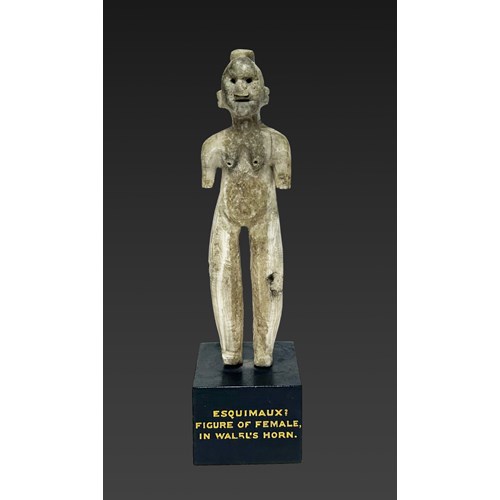Marketplace
Eskimo Fish Hook
Eskimo Fish Hook
Date Thulé culture 1700 – 1900 AD
Origine Central Alaska
Dimension 5.7 x 1 cm (2¹/₄ x 0³/₈ inches)
A superb tom-cod fishing lure carved in the form of a stylized fish and armed with a large, square section, bent, hammered copper nail as the hook. The sides show two copper rivet or nail heads embedded into the matrix for weight. The upper body of the hook is pierced twice for the attachment of the line and the there are three vertical inserts of walrus or seal whisker through the body.
Central Alaska (?), Thulé culture 1700 – 1900 AD. Walrus tusk and copper. 5,7 x 1 cm.
Central Alaska (?), Thulé culture 1700 – 1900 AD. Walrus tusk and copper. 5,7 x 1 cm.
Date: Thulé culture 1700 – 1900 AD
Origine: Central Alaska
Dimension: 5.7 x 1 cm (2¹/₄ x 0³/₈ inches)
Literature: Ref . : Akulivikchuk: a nineteenth century Eskimo village on the Nushagak River, Alaska. Akulivikchuk site, Alaska. Plate 8. Bone and Antler Artifacts. VanStone, James W; Williams, Patricia M. editor Managing Editor, Scientific Publications. [Chicago] Field Museum Press
Plus d'œuvres d'art de la Galerie









